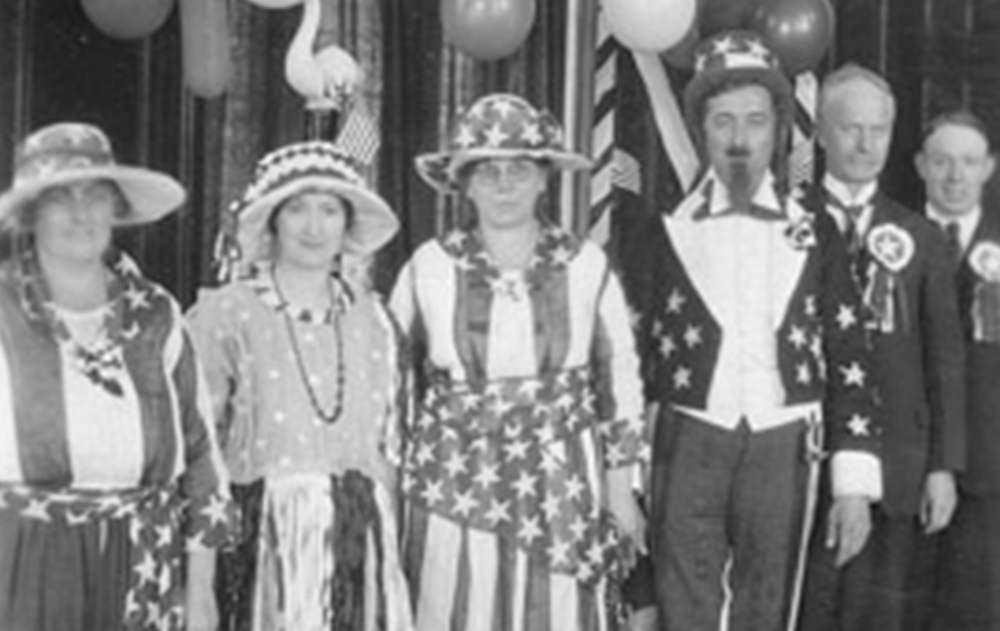To view larger versions of any photograph, please click on the thumbnail images shown below. Each image is accompanied by a caption that contains a short description of the photo.
 The German attacks against the British lines astride the River Somme in March 1918 resulted in heavy casualties, including large numbers of prisoners. Between 21 March and 5 April, when German attention moved north to Flanders, 70,000 British soldiers were captured, like this man from the Royal Irish Regiment.
The German attacks against the British lines astride the River Somme in March 1918 resulted in heavy casualties, including large numbers of prisoners. Between 21 March and 5 April, when German attention moved north to Flanders, 70,000 British soldiers were captured, like this man from the Royal Irish Regiment. The United States of America declared war against Germany on 6 April 1917. But the US Army was small and needed considerable expansion and reorganisation before it could enter the war in Europe. The first contingent of US troops arrived in France on 28 June 1917 and, over the coming weeks, more and more arrived, like these men disembarking at Le Havre in July 1918.
The United States of America declared war against Germany on 6 April 1917. But the US Army was small and needed considerable expansion and reorganisation before it could enter the war in Europe. The first contingent of US troops arrived in France on 28 June 1917 and, over the coming weeks, more and more arrived, like these men disembarking at Le Havre in July 1918.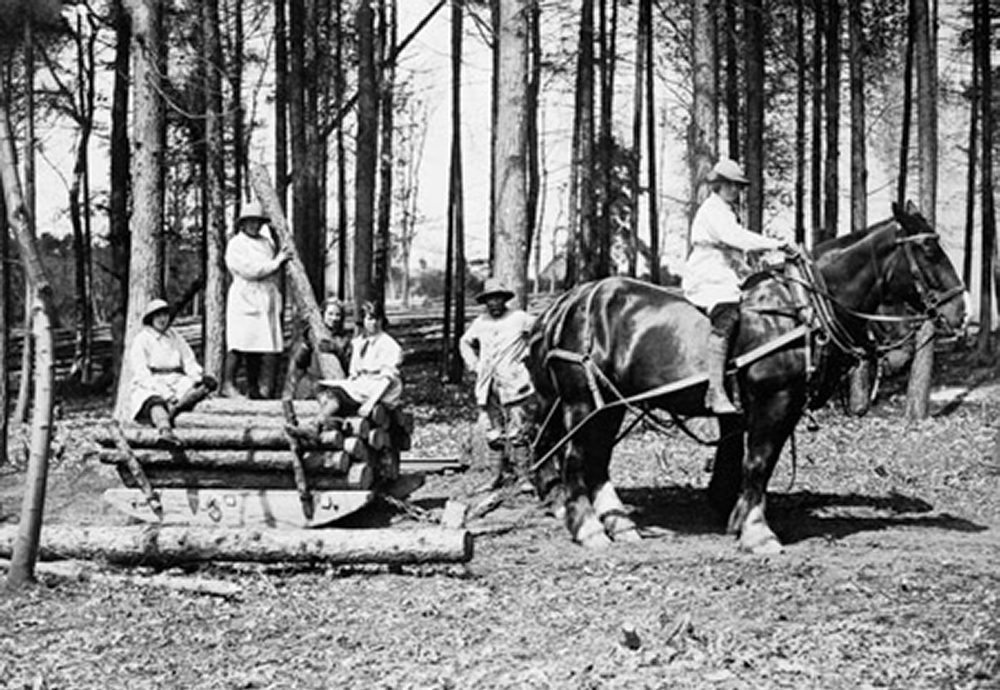 As increasing numbers of men entered the armed forces, their place in the workforce was taken by women. Women did not just work in industry, but in agriculture too. By 1918 around 250,000 women were employed on the land. Part of this effort included the Women's Forestry Corps, some of whom are show here felling trees in Sussex.
As increasing numbers of men entered the armed forces, their place in the workforce was taken by women. Women did not just work in industry, but in agriculture too. By 1918 around 250,000 women were employed on the land. Part of this effort included the Women's Forestry Corps, some of whom are show here felling trees in Sussex.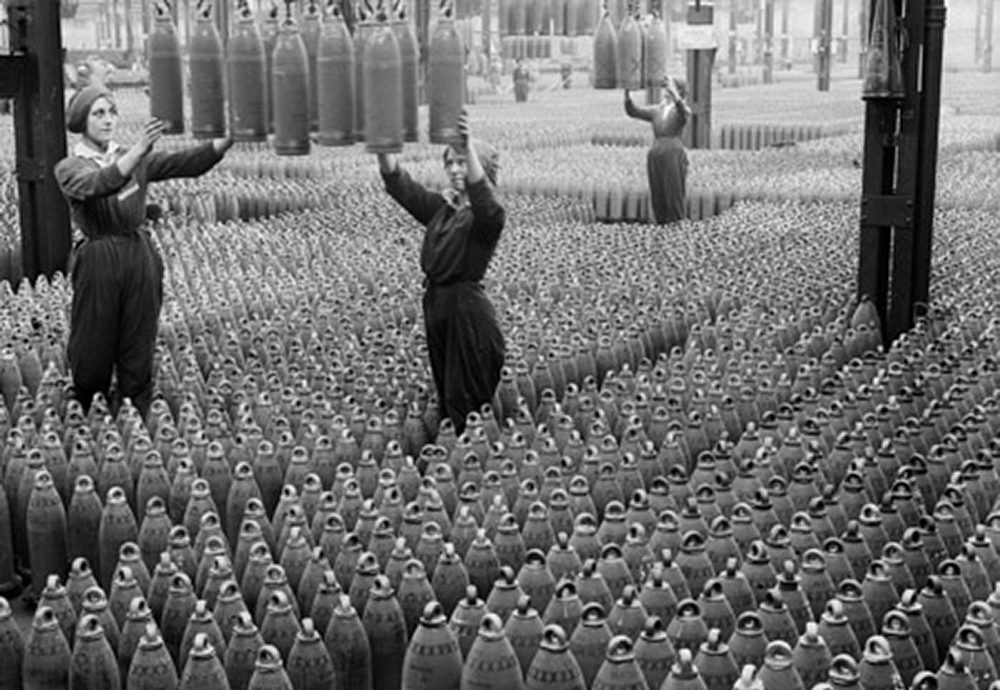 These women, manufacturing 6-inch (152mm) howitzer shells at the National Shell Filling Factory at Chilwell in Nottinghamshire, were part of a huge wartime increase in female workers employed in the munitions industry. By April 1918, 90% of shells were being made by women and the number of women workers in British industry as a whole was approaching 3 million.
These women, manufacturing 6-inch (152mm) howitzer shells at the National Shell Filling Factory at Chilwell in Nottinghamshire, were part of a huge wartime increase in female workers employed in the munitions industry. By April 1918, 90% of shells were being made by women and the number of women workers in British industry as a whole was approaching 3 million. By the end of the war, much of British industry had been converted to war production, like this tank factory seen in 1917. As the British army expanded on the Western Front, so too did its need for resources. In 1914 the British Expeditionary Force numbered 120,000 men, with 300 guns and 63 aircraft. By 1918 this had risen to 2.5 million men, almost 6,500 guns and over 1,700 aircraft.
By the end of the war, much of British industry had been converted to war production, like this tank factory seen in 1917. As the British army expanded on the Western Front, so too did its need for resources. In 1914 the British Expeditionary Force numbered 120,000 men, with 300 guns and 63 aircraft. By 1918 this had risen to 2.5 million men, almost 6,500 guns and over 1,700 aircraft.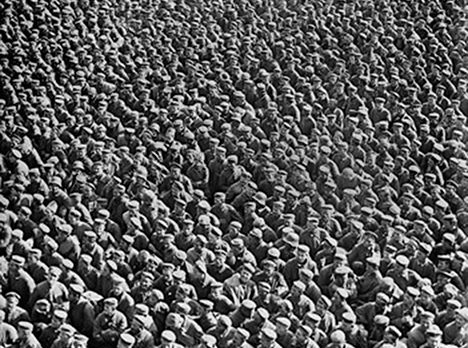 After weeks of attack and withdrawal, towards the end of July 1918 the Allied armies under the overall command of French General Ferdinand Foch, began to hit back. A rolling series of battles began which steadily pushed the Germans into retreat. As they fell back, thousands of German soldiers were taken prisoner and held at depots like this one at Abbeville in France.
After weeks of attack and withdrawal, towards the end of July 1918 the Allied armies under the overall command of French General Ferdinand Foch, began to hit back. A rolling series of battles began which steadily pushed the Germans into retreat. As they fell back, thousands of German soldiers were taken prisoner and held at depots like this one at Abbeville in France.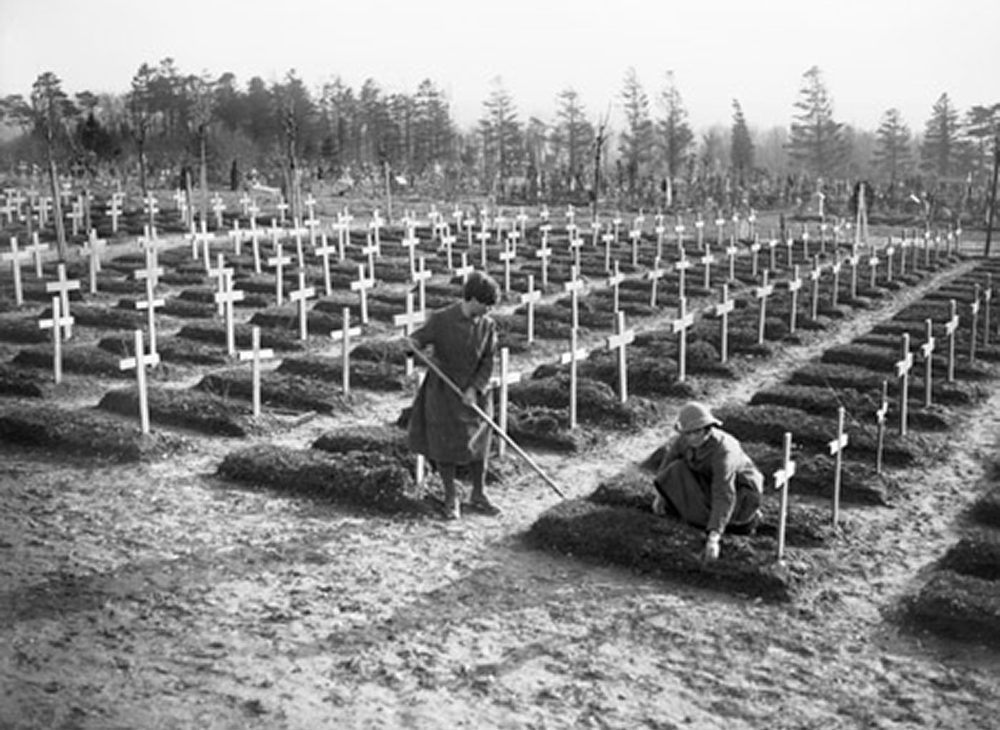 In May 1917, the Imperial (later Commonwealth) War Graves Commission was established to care for the graves of the dead from across the British Empire. By 1919 it was responsible for more than 500,000 graves in over 1,200 cemeteries in France and Belgium alone. Here, members of the Women's Auxiliary Army Corps (WAAC) tend graves in Abbeville in France in February 1918.
In May 1917, the Imperial (later Commonwealth) War Graves Commission was established to care for the graves of the dead from across the British Empire. By 1919 it was responsible for more than 500,000 graves in over 1,200 cemeteries in France and Belgium alone. Here, members of the Women's Auxiliary Army Corps (WAAC) tend graves in Abbeville in France in February 1918.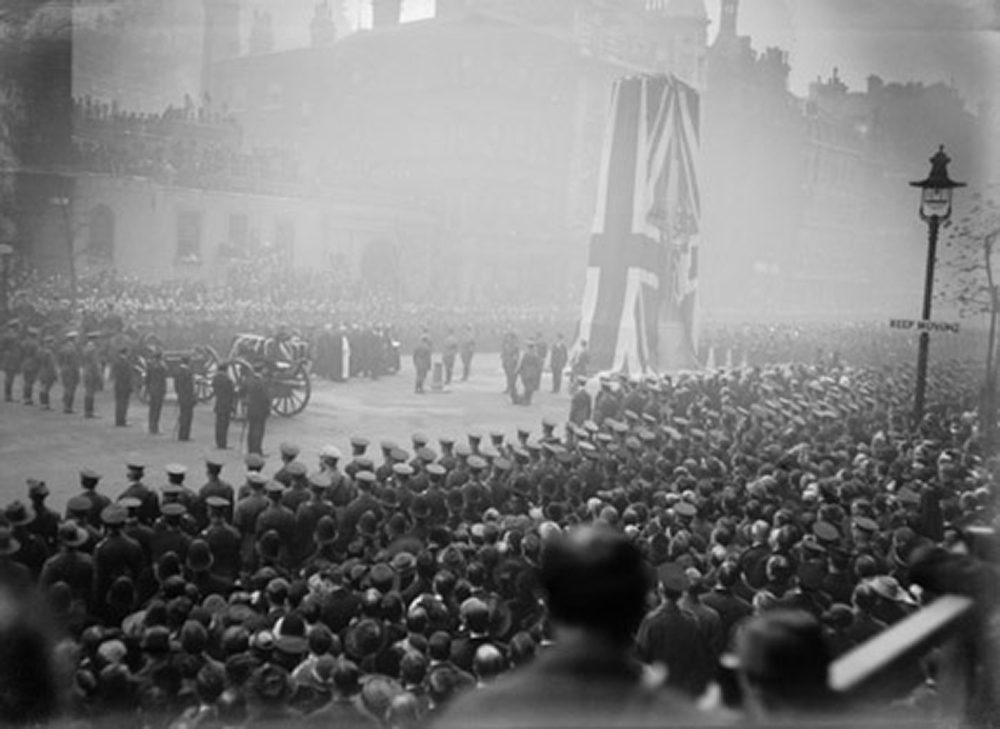 By the end of the war, Britain and its Empire had suffered almost 1 million dead. Many communities felt stunned by a sense of loss. On 11 November 1920, King George V unveiled the Cenotaph in Whitehall (shown here) to commemorate the fallen, before leading mourners to Westminster Abbey to bury the Unknown Warrior.
By the end of the war, Britain and its Empire had suffered almost 1 million dead. Many communities felt stunned by a sense of loss. On 11 November 1920, King George V unveiled the Cenotaph in Whitehall (shown here) to commemorate the fallen, before leading mourners to Westminster Abbey to bury the Unknown Warrior. This wooden mock-up of a British Mark IV Male tank was pictured outside 107 High Street, Marlborough, a property that belonged to the Free family. The lad on the left standing in the tank is Donald Free and there is a strong possibility that the mock up was constructed by the family's cabinet makers. The display is thought to be part of the Town's Victory celebrations.
This wooden mock-up of a British Mark IV Male tank was pictured outside 107 High Street, Marlborough, a property that belonged to the Free family. The lad on the left standing in the tank is Donald Free and there is a strong possibility that the mock up was constructed by the family's cabinet makers. The display is thought to be part of the Town's Victory celebrations. The war memorial to the fallen of the 7th Battalion Wiltshire Regiment in its original position at the junction of London Road and Salisbury Road, Marlborough. The German gun, which was captured by the Battalion and given to the town as a war trophy, is in the centre of the picture pointing towards Hungerford.
The war memorial to the fallen of the 7th Battalion Wiltshire Regiment in its original position at the junction of London Road and Salisbury Road, Marlborough. The German gun, which was captured by the Battalion and given to the town as a war trophy, is in the centre of the picture pointing towards Hungerford.

